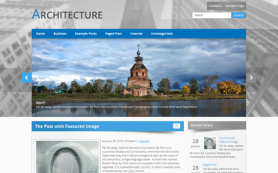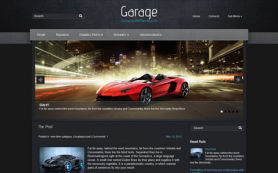UX/UI design of software systems and applications is a field that changes every year. New trends regularly appear, and professional UX/UI design agencies have to keep an eye out. If you consider yourself a professional and want to keep up with the latest trends, keep reading.
Top Trends in UX/UI Design in 2020
You don't have to implement every new fashion into your solutions.
It's not essential to implement every new, fashionable trend into your solutions. However, keeping up to date on what is fresh and relevant can help you develop digital products more in touch with the times.
Improving Complex Animation
Although beautiful animation isn't always viewed on older computers, inferior hardware, and mobile devices, some companies are already thinking about strategies to overcome it. To provide a lasting impression on visitors, they are utilizing animation and using interactive objects that work fine both on top of the market devices and on old machines.If you manage to improve animations so that they are accessible on all devices, it can positively affect the UX of your website.
Dark Themes
In 2019, users positively assessed dark mode for devices and actively used it. In 2020, experts like Clay, a UX design agency, usually include the option of dark mode on websites, mobile, and application design.Tip: if you want to reduce energy consumption, add a dark theme to your application. The degree of energy consumption of the display depends on the amount of light emitted. Dark color palettes emit less light and therefore consume less battery power.
Gradients
Applying gradients to pictures adds volume and depth. In 2020, complex gradients that consist of several colors are growing in popularity. This year, complex gradients will help to add volume and depth to images and backgrounds.
Enhancing the Role of Emotions
Attempts to manipulate the emotions of users through UX/UI will continue to develop. In the pursuit of making the user feel certain emotions, products will use different techniques to establish emotional contact with clients. For example, bright colors, animations, recommender systems, personalized content, all of which focus on the client and provide a positive emotional experience.
Growing Popularity of the Natural Palette
In web design, the natural color palette is gaining momentum. As a rule, it causes a more emotional response from the user and seems more natural compared to artificial ones.
The Formation of Philosophy "For People and From People"
The era of "new sincerity" has arrived. A direct focus on selling the product is given a backseat to user convenience and brand recognition. In UX/UI design, this manifests clearly in the development of more "human" forms that oriented more towards the target audience.
3D Graphics
The trend for 3D is gradually moving away from sites and web applications. 3D technology does not fit well into the new rhythm of life due to how long it takes everything to load. Most applications, except for games, are switching from 3D to other forms of graphic presentation.
Changes in the Navigation Bar
For a long time, the trend of full visibility of the menu for the user, so that they could quickly get to the desired section of the website, was growing. Today, many companies are taking a different route. They hide the menu behind the navigation bar, leaving more negative space for the visitor.
More Time Saving
Perhaps, this is the primary trend in 2020. Due to the accelerating pace of life, many users do not have much personal time. The visitor will not wait if your site or application takes too long to load. Easy-to-understand, fast-loading products are becoming popular.
Increase the Amount of Space
A large amount of white background allows you to focus on one or two essential products. In 2020, users remain on sites that are not overloaded with unnecessary information.
Summing Up
To sum it all up, let's highlight the main thoughts on trends for 2020 and recommend using these new techniques:
- Saving time is foremost. Create a simple design, showing only primary information. Users will save time and immediately get what they want.
- Human design continues to gain popularity. The principle "from people to people" makes it easier to establish an emotional connection with a visitor, and shows the sincerity of the company. Make applications not with an emphasis on selling a service or product, but on solving a specific problem.
- Graphics become more complex and more natural. Gradients and animations are becoming more sophisticated, while natural colors are gaining popularity. Consider replacing the color palette and experimenting with gradients.
- UI design is changing. Highlighting a specific idea becomes one of the main ways to attract a client. Try adding more space for maximum user visibility.
To verify the effectiveness of the changes made, we recommend that you split test two different versions of the site - for example, the old and the new. Then you'll know how users will respond to particular design changes.
 Members Area
Members Area




